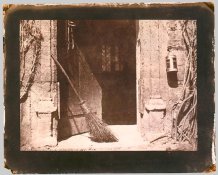analog65
Member
- Joined
- Jan 24, 2014
- Messages
- 175
- Format
- Large Format
Hi, looking to the group here for some input and direction.
I am developing a paper on large format (LF) contact printing.
Can you help point me to some of the most notable LF contact printers? e.g., Edward Weston, Fred Picker?
I am also trying to quantify "why" LF contact prints are considered so special. Thoughts on this and any pointers to literature?
Looking forward to learning more about this.
Thanks!
I am developing a paper on large format (LF) contact printing.
Can you help point me to some of the most notable LF contact printers? e.g., Edward Weston, Fred Picker?
I am also trying to quantify "why" LF contact prints are considered so special. Thoughts on this and any pointers to literature?
Looking forward to learning more about this.
Thanks!











